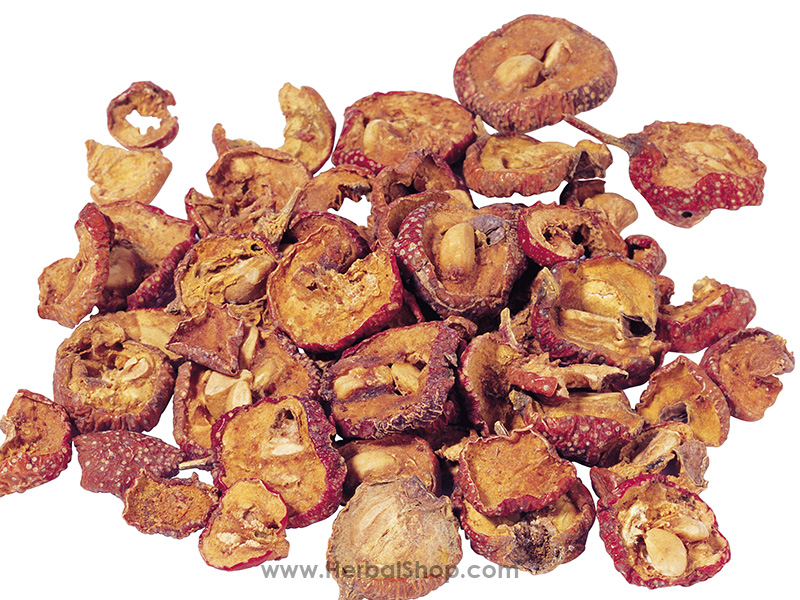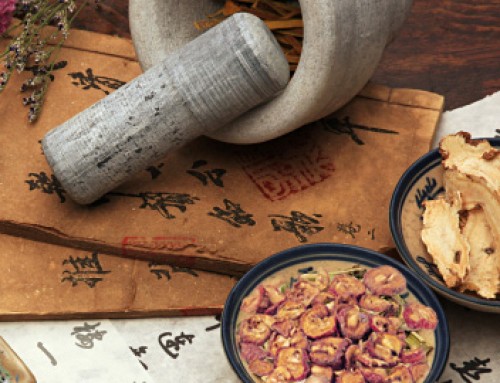山楂
Hawthorn fruit (Shanzha)

Pharmaceutical Name: Fructus Crataegi
Botanical Name: 1. Crataegus cuneata Sieb, et Zucc. 2. Crataegus pinnatifida Bge. var Major N. E. Br.. 3. Crataegus pinnatifida Bge.
Common Name: Hawthorn fruit, Crataegus fruit
Source of Earliest Record: Xinxiu Bencao
Part Used: The fruit is gathered in late autumn or in the beginning of winter, dried in the sun and fried, or raw, fruit may be used.
 Natural Properties & Taste: Sour, sweet and slightly warm
Natural Properties & Taste: Sour, sweet and slightly warm
Meridians: Spleen, stomach and liver
Therapeutic Effects:
• Strengthens the stomach to improve digestive functions.
• Promotes blood circulation to maintain a normal metabolism.
• Relieves diarrhea.
• Lowers blood pressure.
• Dissolves cholesterol deposits in lining of blood vessels.
• Eliminates food retention.
Indications:
1. Food retention (especially of fatty food) accompanied by abdominal and epigastric distension, pain and diarrhea. Hawthorn fruit (Shanzha) is used with Medicated leaven (Shenqu), Germinated barley (Maiya), Costus root (Muxiang) and Bitter orange (Zhiqiao).
2. Postpartum abdominal pain and lochia due to blood stagnation. Hawthorn fruit (Shanzha) is used with Chinese angelica root (Danggui), Chuanxiong rhizome (Chuanxiong) and Motherwort (Yimucao).
Dosage: 10-15 g






